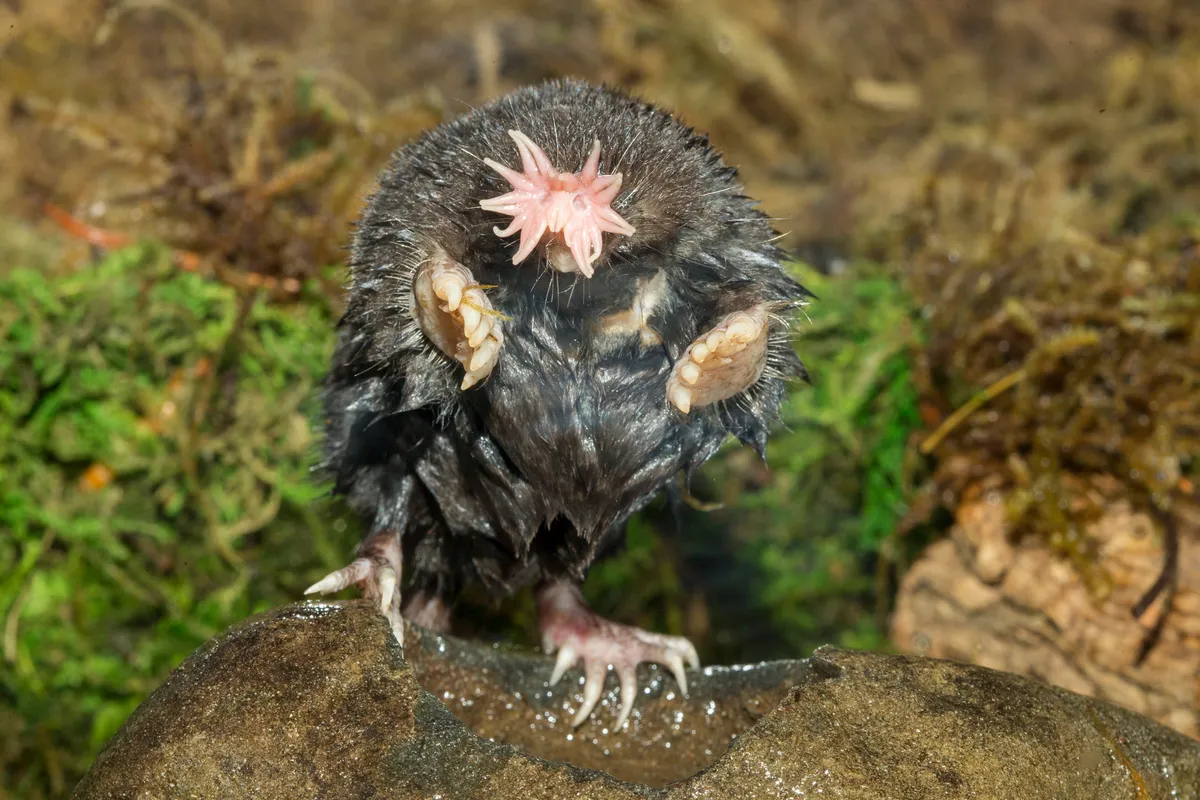Nature defies expectation, with animals boasting strange body parts or survival techniques. From the four-headed penis of the echidna to the pink shell of the pink fairy armadillo, there's plenty to raise an eyebrow at.
Here are some of the weirdest mammals on the planet.
Weirdest mammals
Echidna (Tachyglossidae)

At first glance, the echidna might look like a porcupine – but no. The spikes are just the beginning. Unlike the porcupine, the echidna is a monotreme and has a bird-like beak, a pouch like a kangaroo, and it lays eggs like a reptile. It also boasts a strange four-headed penis, formed of two erectile tissues - one of there weirdest penises.
One of these tissues fills up with blood to maintain an erection, while the other ensures that the urethral tube remains open for the semen to pass through. These small solitary mammals are native to Australia, Tasmania and New Guinea.
Pink fairy armadillo (Chlamyphorus truncatus)

This nocturnal creature is the smallest armadillo species in the world, often measuring less than a £5 note. Spending most of its life underground, the pink fairy armadillo is very rarely spotted (hence its "fairy" nickname).
Its thin shell is for both protection and temperature regulation, containing blood vessels that empty or fill up to help manage the armadillo's body temperature – it is these that give the shell its pink hues. The pink fairy armadillo has surprisingly large feet, with front claws designed to help with burrowing.
Colugo (Dermoptera)

Colugos are known as flying lemurs, despite the fact that they are not technically lemurs and they don't actually fly. But you can see where they got the name from, with their large eyes and the patagium (membrane of skin) that allows them to glide between trees – of distances up to 150m.
Okapi (Okapia johnstoni)

The okapi is known as the forest giraffe, as it's a close relation of the giraffe – but with striped markings reminiscent of zebras.
With a chocolate or reddish brown coat, the okapi has white horizontal stripes and rings on its legs, and white ankles. They are predominantly solitary creatures, but come together to breed.
Naked mole-rat (Heterocephalus glaber)

We can't do a round-up of weird mammals without including the naked mole-rat, one of the strangest rats in the world.
There's no denying these creatures are pretty weird-looking, but they're also pretty strange in the fact that they are the world's only cold-blooded mammal that can survive 18 minutes without oxygen and feel no pain. They live in vast underground colonies led by a queen, who is capable of producing dozens of offspring a year – with no age-related decline in her fertility.
Saiga antelope (Saiga tatarica)

20 years ago, saiga were facing extinction, having fallen to the mercy of poachers, who slaughtered the males for their horns – a much prized item used in traditional Chinese medicine.
Females were found to be outnumbering males by as much as 10:1. Hunting was banned in 1999, but the population continued to drop. A massive conservation effort has shown promising signs of a comeback in Kazakhstan.
They're one of the weirdest animals in the world and are a a strange-looking creature, having been around for many centuries. They once roamed the earth alongside mammoth and woolly rhinoceros in the ice age. In winter, their bulbous nose warms the cold air they breathe – and helps filter dust and cool the animal's blood when it gets too hot.
Star-nosed mole (Condylura cristata)

The weird nose of the star-nosed mole is enough to gain it a spot on this list of weird mammals. But you might be surprised to hear that the nose actually is a bit of a superpower, packed with over 25,000 sensory receptors. Compare that to the 17,000 found in the human hand! It is the most sensitive organ in the animal world. Even though it's pretty weird-looking.
Horsfield's tarsier (Cephalopachus bancanus)

No, surprisingly you're not looking at a science fiction character, although the Horsfield's tarsier doesn't look a million miles away from ET or Yoda. Large, bulging eyes, a tiny body and eerily long fingers have made the Horsfield's tarsier a target for the poachers' pet trade, and they are also facing habitat loss. Light and noise pollution was recently discovered to be a major threat to Horsfield's tarsiers, as they have been found to struggle to sleep.
Long-eared jerboa (Euchoreutes naso)

The long-eared jerboa, a species on the edge of extinction living in desert habitat, is a mouse-like rodent with a long tail, long hind legs and exceptionally large ears.
Aardvark (Orycteropus afer)

The aardvark is a fascinating creature, getting its name from the South African word meaning "earth pig". It certainly looks like a pig, but with long noses and long, sticky tongues – which help them dig up termite mounds and ant nests and eat thousands of insects in one go.
A runner-up on this list of weird mammals would be the anteater, which looks a lot like the aardvark – with a few key differences.
Discover more weird wildlife
- Weirdest birds: meet the strange and weird wonders of the avian world
- Discover the weirdest snakes in the world, from flying serpents to spider-tailed vipers. There's even a hairy species...
- Weirdest sharks in the world: We take a deep dive into the ocean to discover some of its strangest creatures
- Weirdest sea creatures: Meet the world's strangest ocean animals, including one that looks a bit like a toast rack